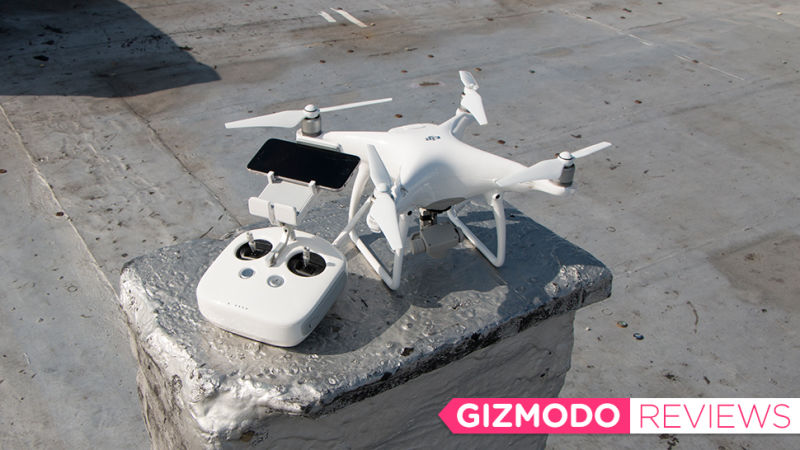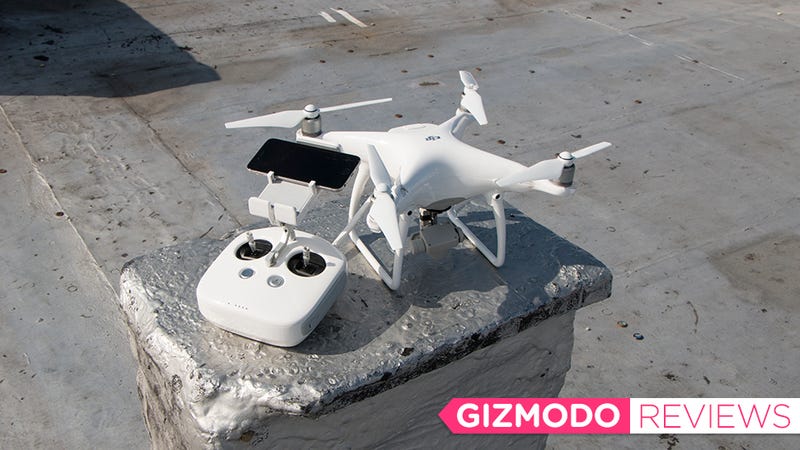
The DJI Phantom 4 is a slick, feature-packed drone. People say it’s the drone that anybody can fly, the quadcopter that you just can’t crash. Let me be painfully clear about two things: 1) Not everyone can fly the Phantom 4, and 2) It’s pretty damn easy to crash.
Each new model in DJI’s Phantom series is easier to fly and better for aerial photography than the last, an Apple-inspired approach to incremental updates that the company can market like hell. The first drone I flew was the Phantom 2 Vision, and it was a fun and easy experience for someone who’d never flown a single thing in his life. But I crashed it and broke it and hurt myself in the process.

The Phantom 4 introduces a slew of features that are supposed to make it easier to fly and harder to crash. Whereas past versions incorporated neat features—quick release propellors, simplified controls, impressive camera upgrades, new intelligent flying modes—the Phantom has always lacked the autonomous flight features that drone pilots want. These include obstacle avoidance and more advanced computer vision that will allow the drone to follow any object. So it was exciting when DJI announced that the Phantom 4 would include front-facing cameras to prevent it from hitting walls and trees, and a feature called ActiveTrak that would keep the camera focused on a specific subject.
Advertisement
The reality is not quite as appealing. The Phantom 4 is certainly the best DJI quadcopter I’ve ever flown. But it’s not the drone for everyone. It’s definitely not the drone for beginners.
Sponsored
I said “wow” when I first pulled the Phantom 4 out of the box. For the first time, DJI has redesigned the Phantom chassis so that it’s smaller and more streamlined. The design is supposed to yield better battery life, and make the rig a bit more portable. (The battery life is even slightly better than the advertised 28 minutes, but it sucks that you can’t fold the landing gear and slide the drone into a backpack.) Meanwhile, upgraded motors allow for a new Sport Mode that would let the Phantom 4 fly as fast as 45 miles per hour.

The Phantom 4 also includes an array of downward-facing cameras and sonar sensors that enable a Visual Positioning System, allowing the drone to know where it is without completely relying on GPS. (The Phantom 3 also has this feature.) Along with an additional inertial measurement unit (IMU), the Phantom 4 feels impressively stable while flying. The lighter form factor does make it a little unwieldy in high winds, but you shouldn’t be flying a little consumer drone in high winds anyways. The camera is just as phenomenal as the one on the previous Phantom drone. It shoots 4K video and takes 12MP still shots. A new gimbal design provides noticeably smoother videos.
Then there are the Phantom 4’s new autonomous features. The quadcopter features two optical cameras on the nose that sense and avoid objects in its path. This is obviously only handy if you’re flying forward—more on this in a second.
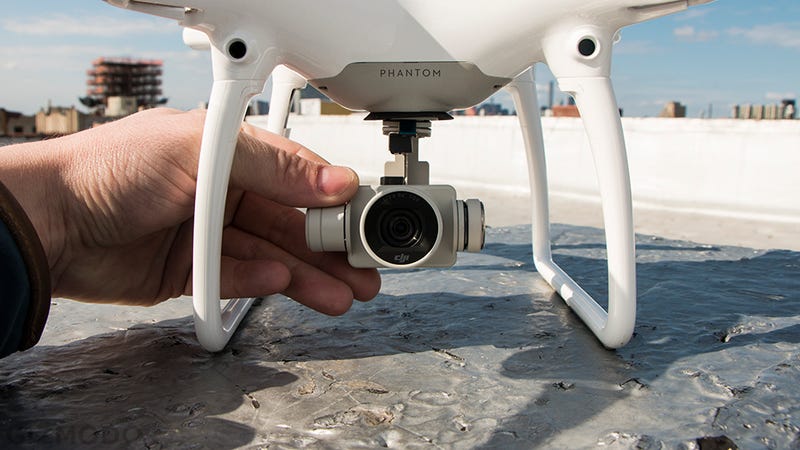
The computer imaging technology that enables these new features, dubbed TapFly and ActiveTrak, sound truly revolutionary. Almost all existing drones depend on a GPS chip in the controller to follow a subject, but the Phantom 4 lets you draw a box on the screen of your mobile device, and tracks that object wherever it goes. Turn it on, leave the RC behind, do your thing, and catch it all on the sky cam.
Advertisement
As a longtime crasher of drones, the obstacle avoidance immediately seemed like the most important addition to the Phantom. Visual tracking is cool, and the ability to tap an area on the screen is probably handy for some people. Nothing beats not crashing when you’re flying a $1,400 gadget.
So you know what the first thing I did with my shiny new Phantom 4 was? I crashed it. I took off and it drifted sideways, right into a wall. As insinuated above, the forward-facing cameras only work when the drone is zooming nose-first at a larger obstacle (i.e. not power lines or small tree branches). If you find yourself flying sideways or backwards—or in speedy Sport Mode—you’re fucked.
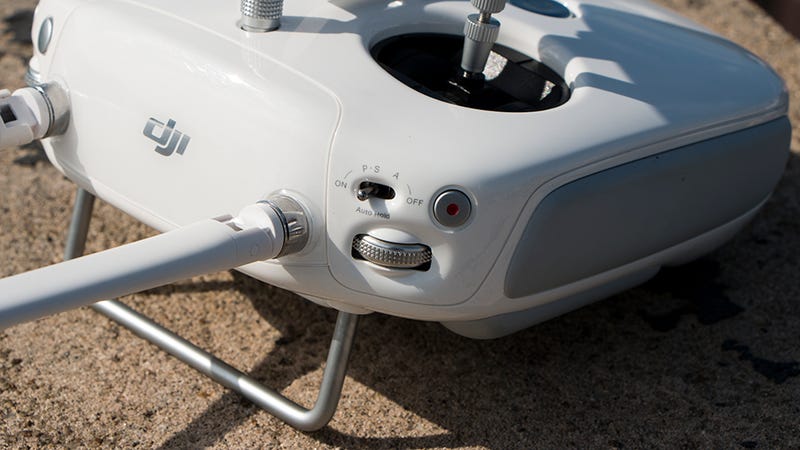
But I’m getting ahead of myself. The first thing I really did when I got my Phantom 4 was make many failed attempts at getting it off the ground. As I’ve learned from past experience, very few quadcopters are truly ready to fly out-of-the-box. The Phantom 4 is no exception. Batteries need charging, and things need calibrating. At first, I had trouble with a beta version of the DJI GO app, which is necessary to fly the Phantom. Then, after I’d schlepped to the park, there was a firmware issue that I couldn’t easily resolved over a cellular connection. All things told, it took me three tries before I got the Phantom 4 off the ground.
Once I did get it a wide open space, I immediately realized that the Phantom 4 is a thrill to fly. It’s nimble and powerful. The camera is incredible. Here’s a shot of New York City that I took on my first flight:

But as I learned over a couple weeks, the software isn’t as user friendly as I wanted it to be. You have to hunt through menus to unlock features, and it’s not easy to make the Phantom 4 do what you want it to, especially the ActiveTrak feature. I recently read an anecdote from another tech blogger who let his toddler fly the quadcopter. I do not recommend this! This is a truly powerful aircraft that stands to cause damage if it crashes—especially if it crashes into people.
The new Phantom is easier to fly than older generations, but it’s not an autonomous drone. Since the object avoidance feature only works when you’re flying forward, novice pilots will definitely have trouble making sure the red lights—which mark the nose of the aircraft—are facing the right direction. The ActiveTrak feature isn’t as graceful as some reviews make it seem. When testing, I could get the camera to keep me in the frame. When I walked further away, the drone didn’t move and lost me completely.

I’m confident that the Phantom 4’s fancy new features work in the right scenarios. I tried to make the drone hit me in head, and it wouldn’t—although there were a few close calls! I flew it straight at a chain link fence, and it slammed to a stop. I flipped on Sport Mode, and watched it rip across a field at a mind-boggling speed. But the way the Phantom 4 is marketed suggests it flies itself. The new autonomous features certainly show progress, but they’re hardly perfect.
I was standing in the middle of a baseball diamond on a blustery Brooklyn day when things went wrong. It had just rained, and the park was deserted. The time was right to test the limits of the Phantom 4, so I switched it into Sport Mode and curled my toes.
“Should we try to see if we can fly it into the cage in Sport Mode,” I shouted to my cameraman, who immediately looked very nervous.
I aimed the Phantom 4 towards the cage and cranked the throttle. I cannot express how fast this drone will move when you let it. The Phantom 4 reached full speed around the time it zoomed over my head, and I turned around just in time to see it explode. White bits of plastic flew in every direction, the consequence of sending an aircraft flying at full speed into a chain link fence.

Like I mentioned earlier, the object avoidance feature doesn’t work in Sport mode. It says so in the manual, which I’d read cover-to-cover. But the problem with drones—especially sophisticated models like the Phantom 4—is that you can’t juggle the configurations very easily on the fly. If you’re a relative novice trying to make the best use of your 25-minute battery life, you’re likely to forget which features work when any given switch is in a certain position. I did, and destroyed a gadget that cost as much as my last car. Thank God, it was in an empty baseball field.
Accidental as it was, my crash illustrated a fundamental problem with the Phantom 4. It’s not crash-proof. It’s also not idiot-proof. And we all have idiot moments.
The Phantom 4 is a fantastic quadcopter, perhaps the best I’ve ever flow. It is not the autonomous drone you want it to be. That’s totally fine for experienced pilots. But it’s not the best beginner drone for everyone.
As an aerial photography drone, the new Phantom is one of the best. As a versatile flying gadget, it’s a thrill to use. The fancy new features could be easier to use, but I doubt you’ll have trouble figuring them out.
So do you want t0 buy the best quadcopter for serious pilots? Buy the Phantom 4. Do you want a drone that flies itself? Hang back a year or two.
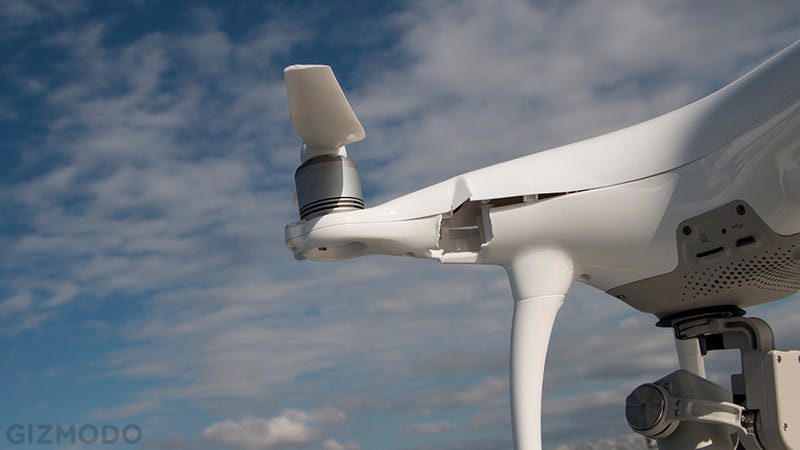
ReadMe
- The Phantom 4 is the best Phantom yet, an absolute thrill to fly and a fantastic photography tool.
- The new autonomous features—TapFly, ActiveTrak, and obstacle avoidance—work most of the time, but it really sucks when they don’t.
- You should not let your toddler fly the Phantom 4, and you should still be careful if you’re an adult novice.
- But seriously, this thing is awesome for both aspiring and experienced drone pilots.

